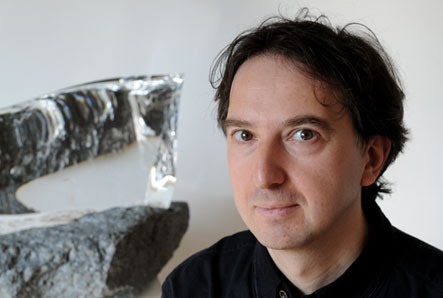Vladimir Zbynovsky was born in the Czech Republic in 1964. After completing his studies in stone sculpture at the Institute of Decorative Arts, he began working in glass at the Bratislava Institute of Fine Arts. This was followed by studies with Olivier de Serres at the School of Applied Arts in Paris. His works have been shown in galleries throughout Europe and Japan. He has been selected to participate in many competitions, and has been awarded prizes including the 1991 Amber prize and the 1996 Triennial Competition, Nuremberg. Because of his popularity with high profile interior designers his work tends to reach celebrated private collections. His works are in the permanent collections of theMeisenthalMuseum, the XXICenturyMuseum, Kanazawa, the bank of St Paul, Luxembourg, and the National Bank, Amsterdam.
Two schools came to light, one from Prague under the direction of Professor Stanislas Libensky and the other from Bratislava, under the inspired leadership of Professor Vaclav Cigler who taught there the art of glass and architecture. The continuous dialogue between man, sculpture and landscape became the focal point of his research.Vladimir Zbynovsky's creative thought stems from the "Cigler" or "Bratislava" schools. History helps underscore how much in the 1958 Brussel's World's Fair, the Czechoslovakian pavilion drew a large audience. For the first time, independent artists presented glass sculptures that broke away from the sphere of applied arts to reach heights of free art.
Vaclav Cigler had a profound impact on his students, bringing them to think through an entire concept rather than an artistic effect. Thus the artistic fields of application in the art of glass were greatly expanded - ranging from sculptural creations to architectural and urbanite visions. His ideas continued to inspire later generations when, in the late 1970's he retired from teaching. Vladimir Zbynovsky benefited in many ways from the teachings of the post Cigler generation: Cigler's ideas remain intact, while new creative paths have been opened up for students. The combination of stone and glass, which from the start have fascinated Zbynovsky, is an example of this. It guides his studies at the school of Fine Arts, urging him to explore all the possibilities of such an alliance. The pathway is open, continuously fuelling his creativity.
